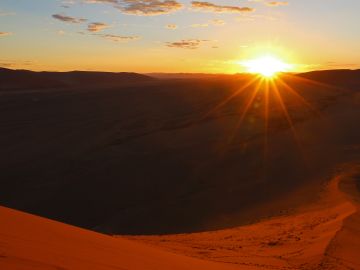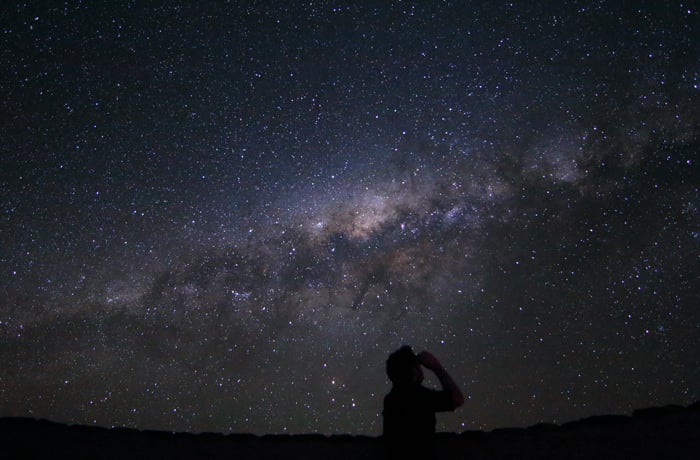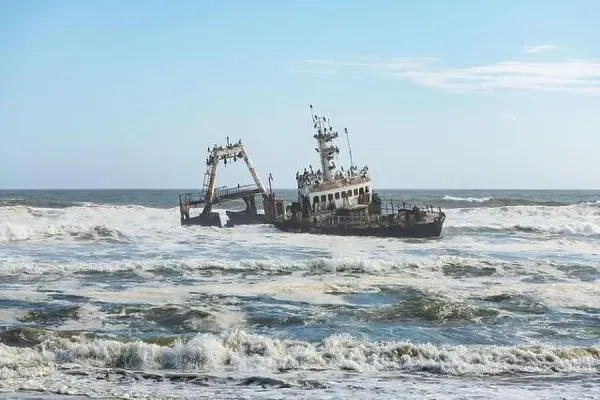Namibia: Finding Myself in the Silence of the Dunes

The world shrinks when you spend too much time staring at screens. I knew I needed a reset, a jolt back to reality. So, I booked a one-way ticket (okay, a return ticket, but one-way sounds more dramatic, right?) to Namibia, a land I knew only from documentaries and whispered tales of endless sand. What I found there wasn't just a landscape, but a confrontation with myself. This is my story of finding myself in the silence of the dunes.
Arrival and First Impressions
Touching down in Windhoek was a deceptive start. Modern, clean, and…normal. But the normality faded fast as I picked up my 4x4 and pointed it west, towards the Namib. The paved roads gradually surrendered to gravel, and then to nothing at all. The change was seismic. Buildings gave way to scrub, then the scrub thinned, and finally…nothing. Just the road, the relentless sun, and an ever-expanding sky. The heat intensified, pressing down like a physical weight. The silence became a presence, a vast, echoing emptiness that both terrified and exhilarated me. I could feel the city shedding off me, layer by layer, with every mile I drove. The vastness was humbling, a stark reminder of my own insignificance.
Dune 45 and Sandboarding
Sunrise. Dune 45. The iconic image. But no photo can truly capture the effort it takes to climb that mountain of sand. Every step forward felt like two steps back as my boots sank deep into the soft, yielding surface. My lungs burned, my thighs screamed, and the sun, even at that early hour, was a persistent adversary. Doubt crept in. Was this worth it? Then, I reached the summit. The view…indescribable. A panorama of undulating dunes, painted in shades of deep red, fiery orange, and soft yellow by the rising sun. The shadows stretched long and dramatic, accentuating the curves and contours of the landscape.
Sandboarding down was pure, unadulterated joy. An adrenaline rush that erased the memory of the arduous climb. The wind whipped past my face, the sand sprayed up around me, and for those brief, exhilarating moments, I was weightless, free. It was a childish, almost primal experience.
Photographer's Note: To capture the perfect shot of a lone figure sandboarding against the backdrop of the rising sun, use a telephoto lens (70-200mm) to compress the perspective and make the subject appear larger against the vast landscape. Shoot in aperture priority mode (f/8 or f/11) for sufficient depth of field to keep both the sandboarder and the background sharp. Use a low ISO (100-200) to minimize noise and a fast shutter speed (1/500th of a second or faster) to freeze the motion. Meter off the highlights in the sky to prevent overexposure and adjust exposure compensation as needed.
Sossusvlei and Dead Vlei
Sossusvlei is a place that defies description. It's like stepping onto another planet. A vast, white clay pan surrounded by towering red dunes, some of the highest in the world. But it's Dead Vlei that truly steals the show. Here, ancient camel thorn trees, dead for centuries, stand stark against the blinding white pan and the deep blue sky. Their skeletal branches reach towards the heavens, a haunting testament to time and the unforgiving nature of the desert. The contrast of colours is something spectacular. The deep blue of the sky emphasizing the harsh reds, oranges and whites of the ground.
Walking through Dead Vlei is a deeply emotional experience. A sense of profound silence and stillness descends upon you. It's a place where you can feel the weight of history, the fragility of life, and the enduring power of nature.

Technical Challenges (Dead Vlei Photography): Photographing Dead Vlei presents unique challenges. The extreme contrast between the bright sky and the dark trees can make it difficult to achieve a balanced exposure. Consider using a graduated neutral density (GND) filter to darken the sky and bring it closer in exposure to the foreground. Alternatively, shoot in RAW format and use post-processing software to adjust the highlights and shadows. Pay attention to composition. Experiment with different angles and perspectives to find the most compelling way to capture the surreal beauty of the scene.
Hot Air Ballooning Over the Namib
The pre-dawn chill bit at my skin as we inflated the hot air balloon. As the burner roared to life, filling the massive envelope with hot air, a sense of anticipation filled the air. Lifting off into the still, silent morning was a surreal experience. The desert unfolded beneath us, a tapestry of dunes stretching as far as the eye could see. As the sun rose, the colors of the sand intensified, painting the landscape in even richer hues.
Floating silently above the Namib, I felt a sense of peace and tranquility I hadn't experienced in years. The scale of the desert was breathtaking. Our balloon's shadow, a tiny speck against the vastness of the dunes, emphasized just how small we were in this immense landscape. We spotted Oryx and Springbok grazing peacefully in the distance, their movements graceful and fluid.
Photographing from a Hot Air Balloon: Photographing from a hot air balloon requires a steady hand and some quick thinking. Use a fast shutter speed (1/250th of a second or faster) to compensate for the movement of the balloon. A wide-angle lens (24-70mm) is ideal for capturing the panoramic views. Stabilize your camera against the basket to minimize vibration. Look for interesting patterns and textures in the landscape below. Try to capture the balloon's shadow in the frame to give a sense of scale.
Stargazing in NamibRand Nature Reserve
The NamibRand Nature Reserve is a Gold Tier International Dark Sky Reserve, and it lives up to its reputation. The night sky there is simply breathtaking. Away from any light pollution, the stars blaze with an intensity I had never witnessed before. The Milky Way stretched across the heavens like a river of light, an awe-inspiring spectacle.
Lying on my back on the cool sand, surrounded by nothing but silence and the cosmos, I felt a profound connection to something larger than myself. It was a humbling and deeply spiritual experience.
Photographing the Milky Way: Photographing the Milky Way requires some specialized equipment and techniques. You'll need a tripod, a wide-angle lens (14-24mm), and a camera that performs well at high ISOs. Use a long exposure (15-30 seconds) and a wide aperture (f/2.8 or wider) to capture as much light as possible. A star tracker can help compensate for the Earth's rotation and allow for even longer exposures, resulting in sharper images. Be mindful of light pollution. Find a location as far away from city lights as possible.
Twyfelfontein and Ancient Rock Engravings
Twyfelfontein, a UNESCO World Heritage site, is a testament to the enduring legacy of human civilization in the Namibian desert. Our guide, a local expert, led us through the site, explaining the meaning and significance of the engravings. The engravings depict a variety of animals, including rhinos, elephants, giraffes, and lions, as well as human figures and abstract symbols. Their style is simple yet expressive, and their age is estimated to be between 2,000 and 6,000 years old.

The engravings offer a fascinating glimpse into the lives and beliefs of the people who created them. They tell stories of hunting, migration, and spiritual rituals. The guide's insights into the meaning of the engravings brought them to life, making the past feel present and relevant.
Namibian Cuisine
No trip to Namibia is complete without sampling the local cuisine. Oryx steak, tender and flavorful, quickly became a favorite. Biltong, dried and cured meat, is a staple snack, available in a variety of flavors and textures. Kapana, grilled meat sold by street vendors, is a must-try for its smoky flavor and spicy sauces. And, of course, there's Tafel Lager, a locally brewed beer that is incredibly refreshing in the desert heat.
One evening, I was invited to a traditional Namibian braai (barbecue) under the stars. The food was delicious, the company was warm and welcoming, and the atmosphere was magical. Sharing stories and laughter around the fire, I felt a sense of connection to the people and the land.
The Skeleton Coast (Briefly)
A brief foray to the Skeleton Coast offered a stark contrast to the inland desert. The air was thick with mist, the ocean a cold, grey expanse. The coastline is littered with shipwrecks, ghostly reminders of the power of the sea. The color of the ocean was a deep, turbulent grey. It's a desolate and unforgiving place, but also incredibly beautiful. The feeling of isolation was palpable, a reminder of the raw power of nature.
Reflections and Lessons Learned
My week in Namibia was more than just a trip. It was a journey of self-discovery. The harsh landscape challenged me physically and mentally, pushing me to my limits. I learned that I am stronger and more resilient than I thought. I learned to appreciate the silence, to find beauty in the starkness, and to connect with nature on a deeper level.
If you're considering a solo adventure, I highly recommend Namibia. It's a place where you can escape the noise and distractions of modern life and reconnect with yourself. Be prepared to be challenged, be prepared to be humbled, and be prepared to be amazed. Pack light, respect the environment, and embrace the silence. You might just find yourself in the dunes.